UPSC Daily Current Affairs- 8th May 2023 | Current Affairs & Hindu Analysis: Daily, Weekly & Monthly PDF Download
GS-2
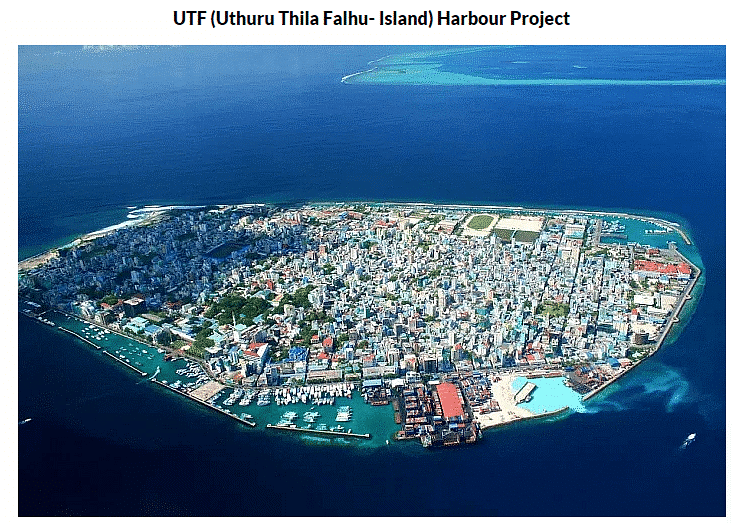
Why in News?
The article discusses the recent commissioning of the Indian grant-in-aid UTF (Uthuru Thila Falhu- Island) Harbour Project, the coastal surveillance radar system, in the Maldives. The project is a significant milestone in the growing defence ties between the two countries.
About:
What is the UTF Project?
- The UTF project was announced during External Affairs Minister S Jaishankar’s visit in February 2021.
- It is among the biggest Indian grant-in-aid projects in the Maldives.
- It is aimed at developing a maintenance and repair hub for naval vessels and will help the Maldives become self-sufficient.
Importance of the Project
- The project marked a major step in growing defence cooperation between India and Maldives.
- The facility will strengthen the capability of the Maldivian Coast Guard and facilitate regional humanitarian assistance and disaster relief efforts.
Controversy Surrounding the Project
- There were allegations that the project was a cover for Indian military presence in the Maldives.
- An “India Out” campaign was launched in the island nation backed by its opposition leader Abdulla Yameen.
- Maldives President Ibrahim Solih banned anti-India protests as a threat to national security.
Defence Cooperation and Other Projects
- India has gifted a Dornier aircraft and a patrol vessel to Maldives in the past.
- India has provided 24 vehicles and a naval boat and will build police facilities on 61 islands in the country.
- The joint statement released by India and Maldives after Defence Minister Singh’s visit highlighted ongoing defence cooperation between the two neighbours.
- The countries have agreed to explore additional avenues for cooperation, including in areas of defence trade, capacity building, and joint exercises.
- Both the countries are working closely to address challenges, including those on maritime security, terrorism, radicalisation, piracy, trafficking, organised crime, and natural disasters.
- India has financed the Greater Male Connectivity Project (GMCP), a $500 million project, to build a 6.74 km bridge and causeway linking the capital of Maldives, Male, with neighboring islands.
India-Maldives Relations: A backgrounder
- India and Maldives are neighbors sharing a maritime border.
- Both nations established diplomatic relations after the independence of Maldives from British rule in 1966.
- India was one of the first nations to recognize Maldives’ independence.
- Since then, India and Maldives have developed close strategic, military, economic and cultural relations.
- Maldivians generally regard Indians and India as a friend and trusted neighbor in the field economic, social and political.
Causes for the anti-India sentiments
- Political instability: The anti-India sentiment is nearly a decade old and can be traced back to when Abdulla Gayoom became president in 2013. He used anti-India sentiments for his political mobilization and started tilting China.
- Controversy over helicopter gift: Two Dhruv Advanced Light Helicopters (ALF) that were given by India to the Maldives for ocean search-and-rescue operations. Opposition tried to portray this as military presence in the country.
- Confidential agreements: Most agreements being signed between the Ibrahim Solih government and India are backdoor and has not been publicly discussed in the Maldives Parliament.
- Alleged interference in domestic politics: India being a big neighbour, there are unsubstantiated perceptions & allegations on Indian Diplomats stationed in Maldives interfering in Domestic affairs.
Restoration of ties
- Ibrahim Mohamed Solih who became President in 2018 has restored Maldives close ties with India.
Major irritants in ties
- Political Instability: India’s major concern has been the impact of political instability in the neighborhood on its security and development.
- Increasing radicalization: In the past decade or so, the number of Maldivians drawn towards terrorist groups like the Islamic State (IS) and Pakistan-based jihadist groups has been increasing.
- Inclination towards terror: Radicalism in the island nation has increased the possibility of Pakistan based terror groups using remote Maldivian islands as a launch pad for terror attacks against India and Indian interests.
- Chinese affinity: China’s strategic footprint in India’s neighborhood has increased. The Maldives has emerged as an important ‘pearl’ in China’s “String of Pearls” construct in South Asia.
Recent gestures by India
- 2014 Male drinking-water crisis
- In the wake of a drinking water crisis in Malé in December 2014, following collapse of the island’s only water treatment plant, Maldives urged India for immediate help.
- India came to rescue by sending its heavy lift transporters like C-17 Globemaster III, Il-76 carrying bottled water.
- 2020 Covid-19 crisis
- During the COVID-19 crisis of 2020, India extended help to Maldives in the form of financial, material and logistical support.
- Also, the IAF airlifted 6.2 tonnes of essential medicines and hospital consumables to Maldives, as part of ‘Operation Sanjeevani’.
- Greater Male Connectivity Project
- India has recently announced the signing of a $500-million infrastructure project for the construction of the Greater Malé Connectivity Project (GMCP).
- This infrastructure project, the largest-ever by India in the Maldives, involves the construction of a 6.74-km-long bridge and causeway link.
Maldives’ significance for India
- Increasing maritime cooperation: As maritime economic activity in the Indian Ocean has risen dramatically in recent decades, the geopolitical competition too in the Indian Ocean has intensified.
- Toll Gate in Indian Ocean: It is situated at the hub of commercial sea-lanes running through the Indian Ocean. More than 97% of India’s international trade by volume and 75% by value passes through the region.
- Naval cooperation: Maldives is an important partner in India’s role as the net security provider in the Indian Ocean Region.
- Important SAARC member: Besides, Maldives is a member of the South Asian Association for Regional Cooperation (SAARC) and the South Asia Subregional Economic Cooperation (SASEC).
- People To People Contact: There is a significant population of Maldivian students in India. They are aided by a liberal visa-free regime extended by India. There is also medical tourism.
- Major destination for Tourists: Tourism is the mainstay of the Maldivian economy. The country is now a major tourist destination for some Indians and a job destination for others.
Way forward
- India continues to be an important partner of the Maldives.
- India must not grow complacent over its position and must remain attentive to the developments in the Maldives.
- India must play a key role within Indo-Pacific security space to ensure regional security in South Asia and surrounding maritime boundaries.
- At present, the ‘India Out’ campaign has support from a limited population but this cannot be taken for granted by the Indian government.
GS-2
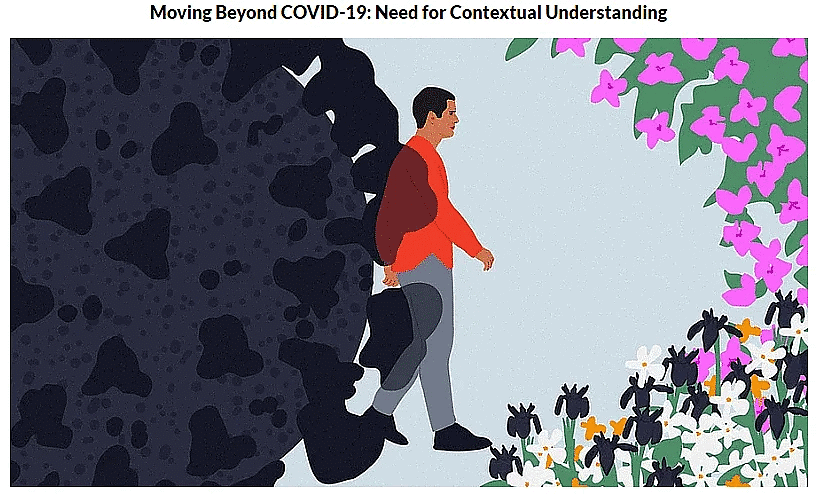
Why in News?
COVID-19 has transitioned from a population-level challenge to more of an individual health concern, and it is time for India to shift gears and apply the lessons learned from the pandemic.
About:
WHO Announcements on COVID-19
- On January 30, 2020, COVID-19 was announced as a public health emergency of international concern.
- On May 5, 2023, WHO declared that COVID-19 was no longer a public health emergency of international concern.
Issues of misinformation during the second wave of COVID-19 in India
- False claims about a third wave affecting children: In April-May 2021, there was a COVID-19 misinformation blitzkrieg that a third wave in India would affect children, leading to children being repeatedly asked to wear masks and deprived of schooling and learning.
- Lack of scientific evidence: School closure and making masks mandatory for schoolchildren had their origin in nearly identical challenges of actions not being supported by scientific evidence.
- Influencers’ impact on public discourse: Social media influencers, not necessarily subject experts, were shaping the public discourse, which was not effectively addressed by governments.
- Disparate viewpoints: Disparate viewpoints existed among experts and influencers living in India and abroad, with the latter making more definitive and stronger arguments for school closure and mask wearing for children in India.
- Failure to consider local context: The sub-groups of super-specialists and those staying abroad failed to factor in the local context while coming up with their opinions.
- Dogmatic stands of self-proclaimed experts: Self-proclaimed experts and influencers have adopted a dogmatic stand and have been selectively and conveniently using emerging evidence and published literature to support their stand, often misguiding gullible followers.
- COVID-foreverers: A group of disparate individuals and social media groups keep insisting on the enforcement of restrictions such as universal masking at ‘the drop of the hat’, often on frivolous grounds.
What lessons were learned from the COVID-19 pandemic?
- The importance of preparedness: The pandemic highlighted the importance of being prepared for future outbreaks and the need for robust public health infrastructure.
- The role of misinformation: The pandemic showed how misinformation can spread rapidly and have serious consequences, highlighting the need for better education and awareness to combat misinformation.
- The importance of local context: The pandemic demonstrated the importance of factoring in local context when making policy decisions, as different regions and countries may face different challenges and require different interventions.
- The danger of dogmatic thinking: The pandemic showed how dogmatic thinking can be dangerous, and the need for an open-minded and evidence-based approach to decision-making.
- The importance of nuance and context in epidemiology: The pandemic highlighted the need for nuanced understanding of epidemiology, and the importance of taking into account the broader context when interpreting scientific studies.
- The need for a shift in focus: With COVID-19 transitioning from a population-level challenge to more of an individual health concern, there is a need to shift the focus from COVID-19 fixation to tackling other pressing health challenges.
- The importance of integrating COVID-19 response with general health services: The pandemic showed the need for integration of COVID-19 response with general health services, and the importance of a balanced approach to public health.
Way forward
- Formal training courses on the principles and practice of epidemiology should be offered by the government to prepare India for more nuanced responses to outbreaks and epidemics and to curb misinformation.
- The government needs to integrate the COVID-19 response to general health services.
- India’s response to surges, outbreaks, and epidemics (of any infectious disease and not just COVID-19) should be guided by a nuanced understanding of epidemiology and not unduly derailed by social media influencers.
- Schools should not be closed for a COVID-19 uptick, and wearing masks in order to attend school should never again be made mandatory, as children were never at risk from moderate to severe COVID-19.
- It is time to drop the COVID-19 fixation and move on to tackle other more pressing health challenges in the country.
Conclusion
- The COVID-19 pandemic has presented numerous challenges and lessons for India and the world. The issues of misinformation and lack of context-based policy interventions have been major obstacles in effectively tackling the pandemic. It is time to apply the lessons learned and shift focus to other pressing health challenges while being prepared to respond to future outbreaks and epidemics with a nuanced understanding of epidemiology.
GS-2
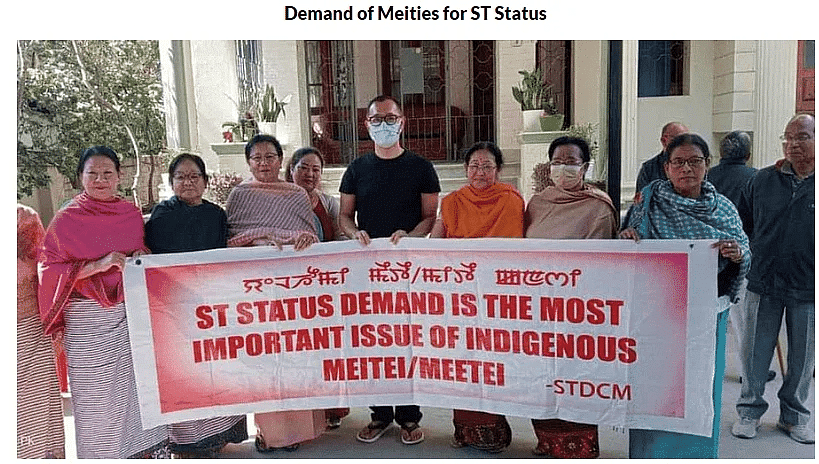
Why in News?
- Recently, the All-Tribal Students’ Union of Manipur (ATSUM) has carried out a solidarity march in order to oppose the demand of Meitei Community be included in the List of State’s Scheduled Tribes (ST).
- The march broke into violent clashes after an order from the Manipur High Court, directing the State to pursue a 10-year-old recommendation to grant ST status to the non-tribal Meitei community.
Why does the Meitei Community want ST Status?
- The Meitei community, led by the Scheduled Tribes Demand Committee of Manipur (STDCM), has been demanding ST status since 2012, asking to provide them with constitutional safeguards to preserve their culture, language, and identity.
- The Meiteis argue that they were recognised as a tribe before the merger of Manipur with India in 1949 but lost their identity after the merger in India.
- As a result of being left out of the ST list, the Meitei community feels marginalized and victimized without any constitutional protections.
- The STDCM has stated that the Meitein/Meetei have been gradually marginalised in their ancestral land.
- Their population, which was 59% of the total population of Manipur in 1951, has now been reduced to 44% as per 2011 Census data.
- They believe that granting ST status would help preserve their ancestral land, tradition, culture, and language, and safeguard them against outsiders.
Why are Other Tribal Groups in Manipur opposing the Demand of Meiteis?
- Meitei's Already in Majority: One reason for this is that the Meitei community is already dominant in terms of population and political representation, as most of the Assembly constituencies are in the valley where the Meiteis live.
- The ST communities fear that granting ST status to the Meiteis would result in them losing job opportunities and other affirmative actions meant for STs.
- Meitei Culture has Recognition: Meitei language is already included in the 8th Schedule of the Constitution, and some sections of the Meitei community are already classified under Scheduled Castes (SC) or Other Backward Classes (OBC), which gives them access to certain opportunities.
- More Political Influence: They also think that the demand for ST status is a way for the dominant Meitei community from the valley area to gain political influence and control over the hill areas of the state by diverting attention from the political demands of other tribal groups like the Kukis and Nagas.
- The Kukis are an ethnic group including multiple tribes originally inhabiting the NE states such as Manipur, Mizoram and Assam; parts of Burma (now Myanmar), and Sylhet district and Chittagong hill tracts of Bangladesh.
- Wanting to dominate trade and cultural activities in these areas, Kukis and Nagas often engaged in violent standoffs, with villages being torched, civilians killed and so on.
- Eviction of Tribal Groups: One of the other reasons for the discontent has been the state government’s notices since August 2022 claiming that 38 villages in the Churachandpur-Khoupum Protected Forest area are “illegal settlements” and its residents are “encroachers”.
- Following this, the government set out on an eviction drive which resulted in clashes.
- Kuki groups have claimed that the survey and eviction is a violation of Article 371C, which confers some administrative autonomy to the tribal-dominated hill areas of Manipur.
GS-3
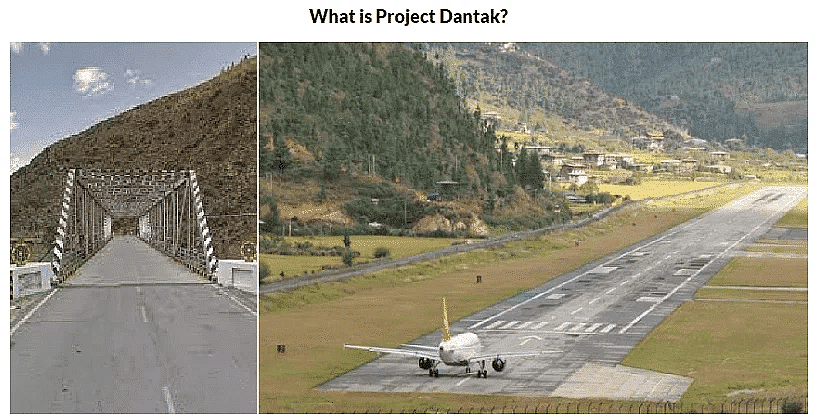
Why in News?
The Prime Minister has praised the initiative by Border Roads Organisation Project Dantak to commemorate 64th Raising Day.
About the Project Dantak:
- Establishment: Established on April 24, 1961, as per the agreement between the third king of Bhutan and then Prime Minister of India Jawahar Lal Nehru.
- Objective: Identify the most important aspects of connectivity and spur the socio-economic development and growth of Bhutan.
- Responsibility: Construct and maintain roads suitable for motorised transportation in Bhutan.
- Legal Provision: Established under the provision of the Indo-Bhutan Treaty of Peace and Friendship, 1949.
Works and Involvement
- Infrastructure Development: Constructing infrastructure in adjoining Indian districts, including Sherbathang–Nathu La road, Gangtok–Sherbathang road, and Sevoke–Gangtok road.
- Establishment of Facilities: Establishing medical and education facilities in outlying areas, which were the first in those regions.
- Takthi Canteen: Takthi Canteen, commonly known as the DANTAK canteen, is a major stop for travelers midway between Phuentsholing and Thimphu.
- Recruitment of Workers: Recruiting local workers from Bhutan and Indian workers from adjoining districts like Jaigaon, Alipurduar, and other parts of Eastern and North-Eastern India under a basic monthly wage.
- Supervision of Work: Posting officials from India for the supervision of work.
Controversies and Incidents
- The Bhutanese Government accused DANTAK of installing Indian tricolour-themed raised pavement markers or reflectors on the highway railings. DANTAK confirmed their presence, and those reflectors were immediately replaced.
- A 204 meters long bridge in Haa along the Damchu-Haa road collapsed in February 2021, leaving 3 workers dead and 6 missing. The bridge was handed over to Project DANTAK by the contractor.
- The project has faced criticisms for its approach to hiring practices and labor management.
Major projects undertaken
- Paro Airport: Built in 1968 as an airstrip for on-call helicopter services for the Indian Armed Forces. Now used as an international airport.
- Yonphula Airfield: Domestic Airport in Bhutan
- Thimphu – Trashigang Highway: Major Highway in Bhutan
- Damchu-Chukha Road: Major Road in Bhutan
- India House Estate: The Indian Embassy in Bhutan.
GS-3

Why in News?
The Food and Drug Administration (FDA) has approved the first vaccine ‘Arexvy’ for respiratory syncytial virus (RSV) to lower respiratory tract disease in people older than 60 years.
About:
What is Respiratory Syncytial Virus?
- Respiratory Syncytial Virus (RSV) is a common respiratory virus that can cause illness in people of all ages.
- It is the most common cause of lower respiratory tract infections in infants and young children, and it can also affect older adults and people with weakened immune systems.
- RSV is highly contagious and spreads through droplets when an infected person coughs or sneezes, or by touching a surface contaminated with the virus and then touching one’s face.
- Symptoms of RSV can range from mild to severe, including runny nose, coughing, sneezing, fever, wheezing, and difficulty breathing.
- In severe cases, it can lead to pneumonia, bronchiolitis, or death.
Identification of Protein F
- In 2013, Barney Graham and other scientists identified the key protein, protein F, responsible for the RSV virus to infect human cells.
- The protein, introduced in humans, elicited neutralizing antibodies against the virus.
Approval and Efficacy of Arexvy
- The FDA has approved Arexvy, the first RSV vaccine to be approved anywhere in the world, manufactured by GSK.
- The approval was based on a phase-3 trial carried out on nearly 25,000 participants.
- It showed a single dose of the vaccine reduced the risk of developing lower respiratory tract disease caused by the RSV virus by 82.6% and severe disease by 94.1% in people older than 60 years.
- The vaccine will be available for older adults in the U.S. before the 2023-2024 RSV season.
GS-3

Why in News?
- Some start-ups have accused the IAMAI (Internet and Mobile Association of India) of favoring Big Tech companies over smaller ones, which highlights the Issue of Anti-Competitive Practices by Big Tech Companies.
- IAMAI is a not-for-profit industry body registered under the Societies Act, 1896. Its mandate is to expand and enhance the online and mobile value-added services sector.
About:
What is the Background?
- The Parliamentary Standing Committee on Finance proposed new regulations to prevent anti-competitive practices by big tech companies.
- These included ex-ante regulations that require companies to follow certain standards of behavior before engaging in certain practices and designating big tech companies as Systemically Important Digital Intermediaries (SIDIs).
- The SIDIs would be the leading entities with the potential to negatively impact competition in the digital ecosystem based on their revenue, market capitalization, and number of active users.
- However, the IAMAI argued that these regulations could stifle innovation and competition.
- Other big tech companies like Meta, Apple, Amazon, Twitter, and Google among its members, submitted similar comments.
- This move has drawn criticism from some Indian startups, who accuse IAMAI of promoting views that favor foreign big tech companies and influencing the Competitive Conduct in the Digital Ecosystem.
How does Big techs Influence the Competitive Conduct in the Digital Ecosystem?
- Acquisitions and Mergers:
- Large firms buying highly valued start-ups without being subject to merge control rules is a problem in digital markets.
- The Committee noted that CCI (Competition Commission of India) is not able to capture certain mergers and acquisitions because they do not meet the thresholds of assets and turnover required for combinations.
- Self-Preferencing:
- Self-preferencing happens when a company promotes its own services or those of its subsidiaries on its platform, while also competing with other service providers on the same platform.
- For example, a company may give priority in rankings to its own applications in an app store. This lack of neutrality can harm other businesses and reduce their profits.
- Self-preferencing happens when a company promotes its own services or those of its subsidiaries on its platform, while also competing with other service providers on the same platform.
- Data Usage:
- Digital companies collect a lot of customer data which can give them an advantage and make it hard for new companies to compete.
- This data can also be misused to track and profile customers.
- Restricting Third-Party Applications:
- Some companies restrict the use of third-party applications on their platforms, which can limit user choice.
- For instance, an operating system may prevent users from utilizing services of an application other than its own, such as Apple not allowing any third-party applications to be installed on the I-phone.
- Some companies restrict the use of third-party applications on their platforms, which can limit user choice.
- Adjacency:
- Digital firms sometimes force customers to buy additional services linked to their main product, which reduces competition and creates pricing asymmetry.
- Anti-Steering:
- Anti-steering provisions are used by entities to prevent business users from using other alternatives, thereby reducing competition.
- For example, application stores mandating the use of their own payment systems. These practices result in anti-competitive exclusionary practices.
- Anti-steering provisions are used by entities to prevent business users from using other alternatives, thereby reducing competition.
What is India's Current Approach to Regulate Big Tech?
- Competition Act, 2002: In India, antitrust issues are governed by the Competition Act, 2002, and the CCI checks upon monopolistic practices.
- In 2022, the CCI imposed a penalty of Rs 1,337.76 crore on Google for abusing its dominant position in multiple markets for 'anti-competitive practices'.
- Competition Amendment Bill, 2022: The government has proposed amendments to the competition law in the Competition Amendment Bill, 2022. The Bill receives Presidential Assent in April 2023.
- The CCI shall frame regulations to prescribe the requirements for assessing whether an enterprise has substantial business operations in India.
- It will strengthen the Commission’s review mechanism, particularly in the digital and infrastructure space, a majority of which were not reported earlier, as the asset or turnover values did not meet the jurisdictional thresholds.
Way Forward
- To address the unique characteristics of digital markets that do not have a turnover, the Parliamentary Standing Committee on Finance proposes a system based on the value of deals.
- They also recommend that any concentration involving entities that provide digital services or collect data should be reported to the CCI before implementation, regardless of whether it meets the notification threshold.
- The government needs to take adequate steps to promote internet awareness, such as checking the authenticity of websites before any transactions are made, and not granting access to unauthorized applications.
GS-2
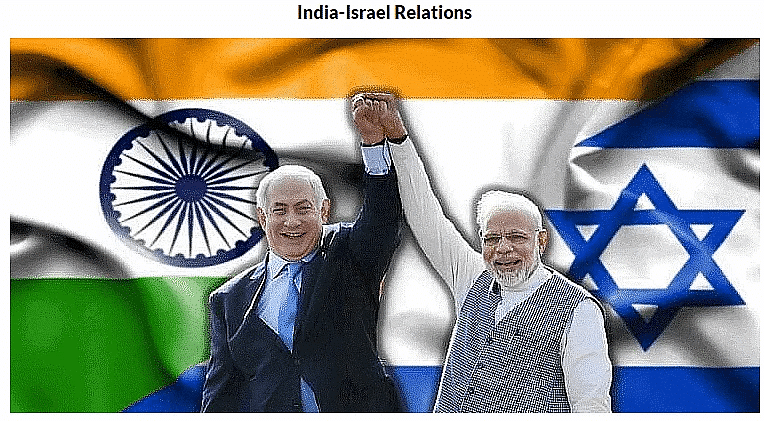
Why in News?
Recently, India’s Council of Scientific and Industrial Research (CSIR) and Israel’s Defense Research and Development (DDR&D) have signed a Memorandum of Understanding (MoU) on Industrial Research and Development Cooperation.
What are the Key Highlights of the MoU?
- It aims to work together on research and development projects in various fields such as Artificial Intelligence (AI), Quantum and semiconductors, synthetic biology, Sustainable Energy, Healthcare, and Agriculture. They will focus on implementing specific projects in mutually agreeable areas.
- The collaboration will include important industrial sectors such as aerospace, chemicals, and infrastructure.
- The MoU will be monitored by a Joint Steering Committee led by the heads of the CSIR and DDR&D for taking forward mutually benefiting Industrial and technology cooperation.
How has the India-Israel Relations been So Far?
- Diplomatic:
- Though India officially recognized Israel in 1950, both countries established full diplomatic ties only on 29th January 1992.
- As of December 2020, India was among 164 United Nations (UN) member states to have diplomatic ties with Israel.
- Economic and Commercial:
- Trade between India and Israel has increased from USD 5 billion before the Covid-19 pandemic to about USD 7.5 billion till 2023 January.
- Trade in diamonds constitutes about 50% of bilateral trade.
- India is Israel's third-largest trade partner in Asia and seventh largest globally.
- Israeli companies have invested in India in energy, renewable energy, telecom, real estate, water technologies, and are focusing on setting up R&D centers or production units in India.
- India is also in dialogue with Israel for concluding a Free Trade Agreement (FTA).
- Trade between India and Israel has increased from USD 5 billion before the Covid-19 pandemic to about USD 7.5 billion till 2023 January.
- Defence:
- India is one of the largest importers of weapons from Israel, contributing to about 40% of its annual arms exports.
- The Indian armed forces have inducted a wide array of Israeli weapon systems over the years, which range from Phalcon AWACS (Airborne Warning And Control Systems) and Heron, Searcher-II and Harop drones to Barak anti-missile defence systems and Spyder quick-reaction anti-aircraft missile systems.
- At the 15th Joint Working Group (JWG 2021) meeting on Bilateral Defence Cooperation, countries agreed to form a Task Force to formulate a comprehensive Ten-Year Roadmap to identify new areas of cooperation.
- Agriculture:
- In May 2021, “a three-year work program agreement” for development in agriculture cooperation, was signed.
- The programme aims to grow existing Centres of Excellence (CoE), establish new centers, increase CoE’s value chain, bring the Centres of Excellence into the self-sufficient mode, and encourage private sector companies and collaboration.
- Science & Technology:
- In recent years, multiple MoUs have been signed between Israel’s Start-Up National Central and Indian entrepreneurship centres like iCreate and TiE (Technology Business Incubators).
- In 2022, the two countries recently widened the scope of the India-Israel Industrial R&D and Innovation Fund (I4F) to include sectors like renewable energy and ICT (Information and Communication Technology) through increased participation of academia and business entities.
- I4F is a cooperation between the two countries to promote, facilitate and support joint industrial R&D projects between companies from India and Israel to address the challenges in the agreed ‘Focus Sectors’.
- Others:
- Israel is also joining the India-led International Solar Alliance (ISA), which aligns very well with the objectives of both countries to scale up their cooperation in renewable energy and partner in clean energy.
Way Forward
- Indians are sympathetic towards Israel and the government is balancing and recalibrating its West Asia policy on the premise of its own national interest.
- India and Israel need to overcome the vulnerability of their religious extremist neighbours and work productively on global issues like climate change, water scarcity, population explosion and food scarcity.
- A more aggressive and proactive Middle Eastern policy is the need of the hour for India to reap the maximum benefit of the geopolitical realignments gradually being brought in by the Abraham Accords.
|
38 videos|5293 docs|1118 tests
|
















